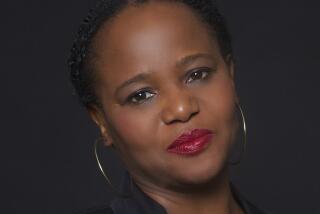BOOK REVIEW : Examining the State of Isolation : MIGRATIONS TO SOLITUDE, <i> by Sue Halpern,</i> Pantheon, $20; 213 pages
- Share via
Sue Halpern’s view of solitude is expansive, original and exploratory, each essay in this collection redefining the term according to circumstance. Though her style is relaxed, closer in spirit and style to modern journalism than to the formal cadences of Montaigne, these pieces are still thoughtful essays in the classic sense. She’s assigned herself the job of investigating the state of aloneness, an entirely different condition from loneliness.
Some of her people, like the Kentucky monks who use their voices only to sing, or the Adirondack Mountain hermits who have rejected electricity and the phone, have voluntarily fled the world; others, like the man in the Louisiana State Penitentiary or the once-homeless woman who lived on park benches and in subways, have had solitude thrust upon them. Two essays deal with the special isolation of the terminally ill, cocooned in suffering, and then examine the separate but almost equal isolation of those who care for them.
Tragedy, like the bungled abortion that killed Becky Bell at the age of 17, tends to singularize survivors in still another way. The man who sells advanced surveillance devices is not so much alone as highly specialized, in the business of invading the privacy that some of Halpern’s other subjects seek. He represents the flip side of solitude, and his inclusion provides a welcome touch of lightness. The concluding essay is an account of the author’s own foray into the wilderness, an adventure that gives her the chance to test the effects of solitude upon herself.
In fact, only the monks, the prisoner, and the elderly couple who live in the Adirondack woods truly live alone, but even their solitude is qualified. The monks are part of a community; the prisoner is moved back into a cellblock, and the Adirondack mountain couple have each other. The once-homeless woman now lives in an apartment of her own. She is an alumna of POTS house, a Bronx building rehabilitated by a group whose name is an acronym for “Part of the Solution.” A former drug abuser and alcoholic, Janet Driver is an articulate spokesperson for people like herself, proving that programs like POTS can make a permanent difference.
The parents of Becky Bell have become leading crusaders for the right to legal abortion without the stipulation that a teen-ager must have parental permission for the operation; a provision in effect in Indiana when Becky became pregnant in 1988. Their daughter’s death has become a cause celebre, and the Bells are now highly visible Washington lobbyists and lecturers. By the process of extension, these essays move smoothly from the particular to the general.
“24 Hours Back of Beyond” is set in the intensive care unit of New York University Hospital, and after a description of the condition of various desperately ill patients, the piece evolves into a powerful argument for the right to die. Brief and excruciatingly poignant, “Maria” tells the story of Maria Cruz and her son Jose, who is dying of AIDS in a Los Angeles hospice. Like “Telling the Truth,” the report on Becky Bell and her parents’ crusade, these essays are a particularly potent and persuasive kind of advocacy journalism. Instead of abstract arguments for the issues at stake, the reader is presented with names, faces and histories, a technique that adds immeasurably to the effect of the material.
Though individual essays sometimes seem forced to shelter under the umbrella of the stated theme, that fact should not deter readers. Books need titles the way eggs need shells. There has to be a package, and this one, by an uncommonly gifted and compassionate writer, is worth opening.
More to Read
Sign up for our Book Club newsletter
Get the latest news, events and more from the Los Angeles Times Book Club, and help us get L.A. reading and talking.
You may occasionally receive promotional content from the Los Angeles Times.







